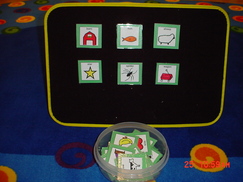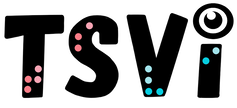- Home
-
VI Basics
-
Eligibility
- VI Referrals >
- Medical Vision Exam >
- Visual Diagnosis >
-
FVLMA
>
- FVLMA & Service Printables
- Conducting a FVLMA
- What is the FVLMA
- Environmental Observations
- Student Observations
- Interviews
- Assessment Kit Materials
- Oculomotor Skills
- Near Visual Acuities
- Print Comparisons
- Distance Acuity
- Test Visual Fields
- Vision Skills
- Learning Media Assessment
- Reading Rates
- Writing the FVE Report
- Other Evaluations >
-
Service
- ECC Annual Needs
- Service Plans >
- Goals & Objectives >
-
Adaptations
>
- Accommodations & Modifications
- School Campus Adaptations
- Playground Adaptations
- Movies & Assemblies
- Classroom Design Tips
- Adjust Lighting
- Label Classroom
- Board Work (Chalk, Interactive, White)
- Morning Meeting
- Lectures & Instruction
- Accessible Educational Materials
- Photocopying
- Font Legibility
- Increase Contrast
- Pictures and Worksheets
- Large Print
- Accommodations for VI
- Accessible Content for BLVI
- Collaboration >
-
Instruction
>
- Material Preparation
- Virtual Instruction
- Development of ECC Resources
- Teaching the ECC
- Teaching in Thematic Units
- Instructional Strategies
- iPads as Instructional Tools
- Standard Course of Study Strategies & Activities
- The Art of Teaching the ECC
- Activities to Teach the ECC
- Virtual & F2F Strategies
- Found of Teaching the ECC in the Age of Virtual Instruction
- Complete Set Bonus >
-
Themes
>
- Using Themes to Teach the ECC
- Back to School
- Birthday's and Aging
- Self & Identity
- Pets & Service Animals
- Family & Geneology
- Apples & Orchard
- Autumn & Home Maintenance
- Pumpkins & Farms
- Costumes & Candy
- Politics & Voting
- Grocery Stores
- Meal Preparation & Thankfulness
- Shopping & Clothing Care
- Christmas & Gift Giving
- Clocks, Time, New Year
- Resolutions & Healthy Habits
- Wintertime
- Cold & Flu Season
- Adapted Sports & Paralympics
- Valentines Love & Friendship
- Severe Weather Unit
- Stay Safe
- Home & Spring Cleaning
- Springtime & Easter
- Gardening
- Communication & Post Office
- Hygiene & Grooming Unit
- Transportation
- Jobs & Employment
- Graduation & Life Changes
- The Great Outdoors
- Vacations & Travel
-
ECC
-
Compensatory
>
-
VI Assistive Tech
>
- VI AT Printables
- Selecting the Right AT
- Overview of Assistive Technology
- Low/Medium Tech Devices for Tactual Learners
- Non-Optical Low Vision Devices
- Optical Devices for Near
- Optical Devices for Distance
- Making the iOS Device Accessible
- VoiceOver
- iOS Accessibility Resources
- Screen Magnifiers & Readers
- Magnifier Apps
- Keyboarding Instruction
- Word Processing and Shortcuts
- Navigate Computer without a Mouse
- Video Magnifiers
- Video Magnifier Instruction
- Braille Technology
- Notetaker Instruction
- Auditory Access Devices
- Accessing Audio Books
- Apps to Access Books
- Apps for VI
- VI AT Resources
- Social Skills >
- Self Determination
-
Sensory Efficiency
>
-
Independent Living
>
- Responsibility & Independence
- General Home Safety
- Bathroom Adaptations
- Hygiene & Grooming
- Medication Adaptations
- Dramatic Play
- Dressing & Clothing Identification
- Clothing Management
- Housekeeping Maintenance
- Eating Adaptations
- Mealtime Independence
- Kitchen Adaptations
- Food Preparation
- Recipe Activities
- Money
- Orientation & Mobility >
- Recreation & Leisure >
- Career & Vocational >
-
Compensatory
>
- VI Store
- Jobs
Music & MovementBy: Carmen Willings
teachingvisuallyimpaired.com Music activities can provide students with the opportunity to: develop an appreciation for all types of music; develop a mode of self-expression; develop listening skills; use positive expressions of feelings; improve coordination and rhythm; increase language skills; develop awareness of rhythm; and develop space awareness through movement. Take advantage of music time to sing songs which use names. This can help all students get to know the names of their peers. This is also an excellent time for students to get their wiggles out prior to whole group discussions and activities that require longer periods of sitting and attending.
Create an object box with real or real like objects (see the box above). Have each object represent a song and allow the students to select an object to determine what song to sing. (Tip: close your eyes and feel in the bin. Are the items recognizable? Keep in mind that you have the advantage of a visual memory.) Many students listen to the songs but don’t seem to participate. Consider recording some of the songs to encourage the student to practice and sing along first at home. Teach Concepts Through Music & Movement
Take advantage of this time to teach body concepts and positional concepts through songs that teach concepts such as Hap Palmer or Greg & Steve. Incorporate songs that require students to follow directions and perform actions. Remember a student who is severely visually impaired cannot learn by observing and imitating the actions of others. You may need to physically put the student through the actions of the song or allow the student to experience the actions you are performing. Also incorporate simple finger-plays to develop finger dexterity.
Choose songs that will provide practice with concepts such as in/out, like/different, up/down, front/back or encourage identification of body parts. Provide a variety of musical instruments to play along with the songs/music. Work with the students on their listening skills. Provide experiences that focus on the auditory discrimination of people’s voices, instruments and sounds related to activities. Teach the differences in sound, pitch, rhythm, speed, volume, move, dance, share space and learn names of body parts. Move from simple sound identification to tonal and volume discrimination, to the reproduction of sound, to discriminating between similar or different sounds. The following is a list of songs that incorporate directional concepts, a variety of actions and teach body parts. Structure the situation by:
CD: Sally the Swinging Snake by Hap PalmerSomething Special:
Clap, walk, shake, high, low, in between, side, other side, back Rubber Band Man: thumbs, shoulder, wrist, ankle, arms, stomach, toes, elbows, fingers, nose, stretch, snap, land softly, hang loose, stretch tight, bend left, twist right, far apart, together , long, thin, short, wide Dancing with a Stick: Inside, outside, hands, foot, elbow, shoulder, head, whole self CD: Walter the Waltzing Worm by Hap PalmerWhat a Miracle:
Hands, feet, arms, legs, spine, foot, clap, stamp, swing, bend, stretch, twist, balance Flick a Fly: thumbs, shoulder, wrist, ankle, arms, stomach, toes, elbows, fingers, nose, stretch, snap, land softly, hang loose, stretch tight, bend left, twist right, far apart, together , long, thin, short, wide Dancing with a Stick: Inside, outside, hands, foot, elbow, shoulder, head, whole self Book with CD: Music for Little People by John M. FeierabendHead & Shoulders, Knees & Toes
Head, shoulders, knees, toes, eyes, ears, mouth, nose The Wiggle Song: Thumbs, wiggle, fingers, hands, arms, head, legs, all of me Mother Goonie Bird right wing, left wing, right foot, left foot, head, sit down The Jack-in-the-Box Up, jump, flop, around, plop CD: We All Live Together Vol. 3 by Greg & SteveSimon Says
head, eyes, nose, mouth, eyebrows, ears, teeth, hair, cheeks, neck, chin, shoulders, arms, elbows, fingers, hands CD: Kids in Motion by Greg & SteveThe Body Rock
feet, arms, head, hands, hips, knees The Freeze stopping on command Tummy Tango left and right CD: Kidding Around by Greg & SteveHokey Pokey (Part 1 & 2)
Turn yourself around, right hand, left hand , right foot, left foot, head, whole self Songs for Teaching is an online source for educational music for all ages. It offers thousands of children's songs, lyrics, sound clips and teaching suggestions.
|
Recreation & Leisure Skills
|
|
Teaching Students with Visual Impairments LLC
All Rights Reserved |
- Home
-
VI Basics
-
Eligibility
- VI Referrals >
- Medical Vision Exam >
- Visual Diagnosis >
-
FVLMA
>
- FVLMA & Service Printables
- Conducting a FVLMA
- What is the FVLMA
- Environmental Observations
- Student Observations
- Interviews
- Assessment Kit Materials
- Oculomotor Skills
- Near Visual Acuities
- Print Comparisons
- Distance Acuity
- Test Visual Fields
- Vision Skills
- Learning Media Assessment
- Reading Rates
- Writing the FVE Report
- Other Evaluations >
-
Service
- ECC Annual Needs
- Service Plans >
- Goals & Objectives >
-
Adaptations
>
- Accommodations & Modifications
- School Campus Adaptations
- Playground Adaptations
- Movies & Assemblies
- Classroom Design Tips
- Adjust Lighting
- Label Classroom
- Board Work (Chalk, Interactive, White)
- Morning Meeting
- Lectures & Instruction
- Accessible Educational Materials
- Photocopying
- Font Legibility
- Increase Contrast
- Pictures and Worksheets
- Large Print
- Accommodations for VI
- Accessible Content for BLVI
- Collaboration >
-
Instruction
>
- Material Preparation
- Virtual Instruction
- Development of ECC Resources
- Teaching the ECC
- Teaching in Thematic Units
- Instructional Strategies
- iPads as Instructional Tools
- Standard Course of Study Strategies & Activities
- The Art of Teaching the ECC
- Activities to Teach the ECC
- Virtual & F2F Strategies
- Found of Teaching the ECC in the Age of Virtual Instruction
- Complete Set Bonus >
-
Themes
>
- Using Themes to Teach the ECC
- Back to School
- Birthday's and Aging
- Self & Identity
- Pets & Service Animals
- Family & Geneology
- Apples & Orchard
- Autumn & Home Maintenance
- Pumpkins & Farms
- Costumes & Candy
- Politics & Voting
- Grocery Stores
- Meal Preparation & Thankfulness
- Shopping & Clothing Care
- Christmas & Gift Giving
- Clocks, Time, New Year
- Resolutions & Healthy Habits
- Wintertime
- Cold & Flu Season
- Adapted Sports & Paralympics
- Valentines Love & Friendship
- Severe Weather Unit
- Stay Safe
- Home & Spring Cleaning
- Springtime & Easter
- Gardening
- Communication & Post Office
- Hygiene & Grooming Unit
- Transportation
- Jobs & Employment
- Graduation & Life Changes
- The Great Outdoors
- Vacations & Travel
-
ECC
-
Compensatory
>
-
VI Assistive Tech
>
- VI AT Printables
- Selecting the Right AT
- Overview of Assistive Technology
- Low/Medium Tech Devices for Tactual Learners
- Non-Optical Low Vision Devices
- Optical Devices for Near
- Optical Devices for Distance
- Making the iOS Device Accessible
- VoiceOver
- iOS Accessibility Resources
- Screen Magnifiers & Readers
- Magnifier Apps
- Keyboarding Instruction
- Word Processing and Shortcuts
- Navigate Computer without a Mouse
- Video Magnifiers
- Video Magnifier Instruction
- Braille Technology
- Notetaker Instruction
- Auditory Access Devices
- Accessing Audio Books
- Apps to Access Books
- Apps for VI
- VI AT Resources
- Social Skills >
- Self Determination
-
Sensory Efficiency
>
-
Independent Living
>
- Responsibility & Independence
- General Home Safety
- Bathroom Adaptations
- Hygiene & Grooming
- Medication Adaptations
- Dramatic Play
- Dressing & Clothing Identification
- Clothing Management
- Housekeeping Maintenance
- Eating Adaptations
- Mealtime Independence
- Kitchen Adaptations
- Food Preparation
- Recipe Activities
- Money
- Orientation & Mobility >
- Recreation & Leisure >
- Career & Vocational >
-
Compensatory
>
- VI Store
- Jobs

